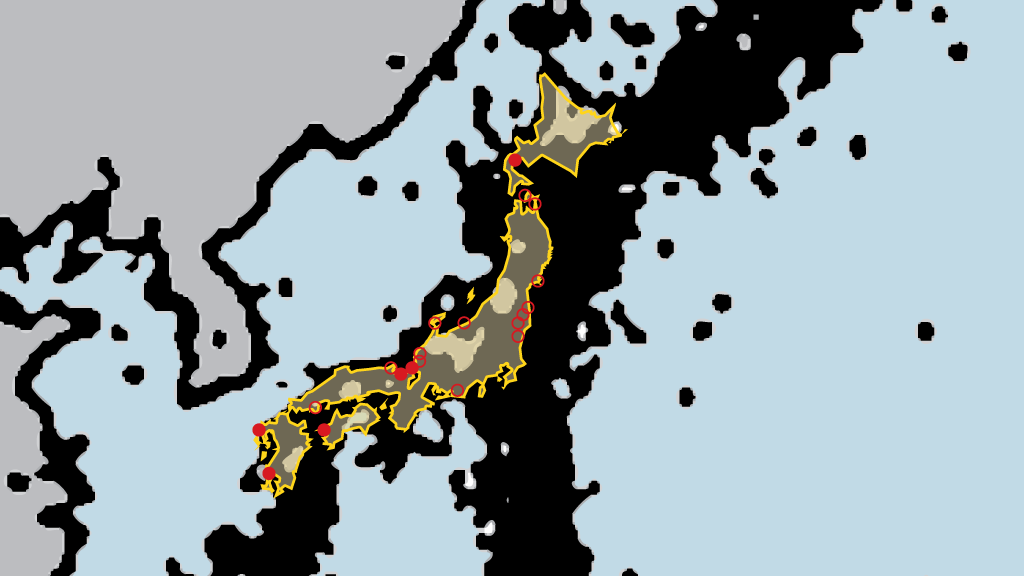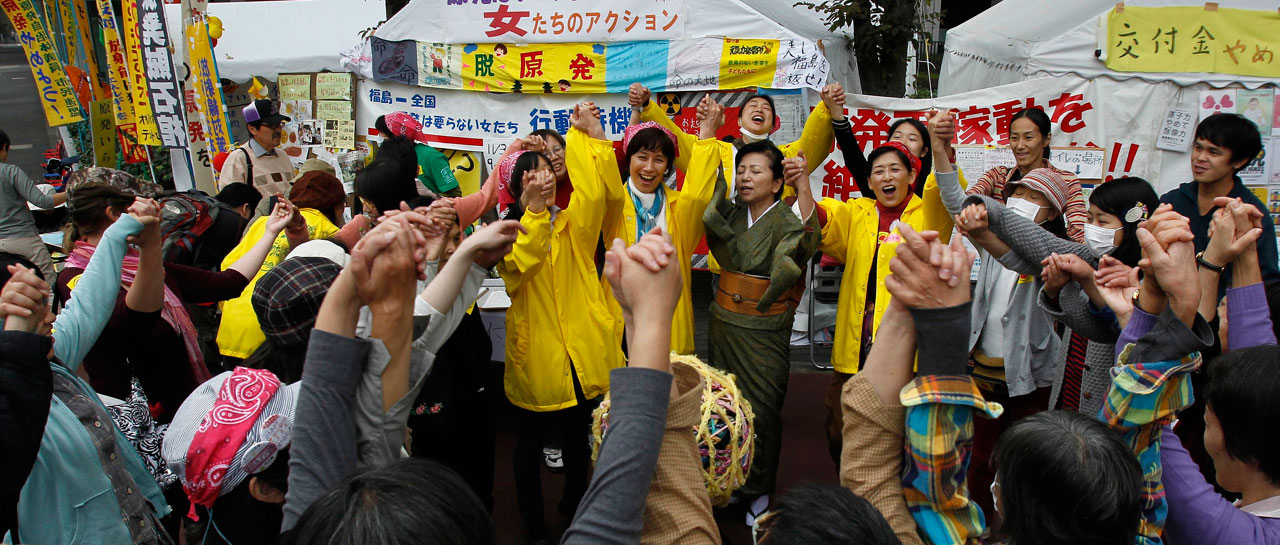Pre-Ruling Background Briefing on Sendai Nuclear Power Plant Units 1 and 2 Injunction Lawsuit
For immediate release: 22 April 2015 00:05 JST (Kyoto City/Kagoshima City)
For further information contact: Aileen Mioko Smith, Executive Director, Green Action
+81-90-3620-9251
(on site in Kagoshima City)
A 3-member panel of judges headed by chief judge Maeda will be handing down a decision at 10:00am today (22 April) at the Kagoshima District Court regarding the operation of the Sendai Nuclear Power Plant Units 1 and 2.
FFTV live from 10am: http://twitcasting.tv/fukuroufoe_tv
Background:
There are 5 super volcanoes (calderas) within a 160km of the Sendai Nuclear Power Plant. On 10 September 2014, Japan’s Nuclear Regulation Authority (NRA) granted permission of a change in reactor installation i.e. that the application for Sendai Nuclear Power Station Units 1 and 2 owned and operated by Kyushu Electric met post-Fukushima accident nuclear regulatory standards. The NRA granted permission for the Construction Plan on 18 March 2015. The last step in the permission process, the Operational Safety Program, remains to be completed.
Main issues: Earthquakes, volcanoes, and emergency evacuation plans
Earthquakes
Plaintiffs:
Since 2005, measurements which surpassed the reactors’ basic earthquake ground motion have occurred 5 times at a total of 4 reactor sites in Japan.
The basic earthquake ground motion estimation, calculated from the length of faults and other factors, is based on the average picture of past earthquakes i.e. data that vary from the average are not taken into consideration. Because of this, the result becomes significantly underestimated.
Basic earthquake ground motion is also based on only a limited amount of data.
Because earthquakes greater than estimated could occur at the Sendai Units 1 and 2 reactor sites, the current basic earthquake ground motion of 620 gal is too low. Because of this, there is a danger of reactor core meltdown.
The defendant Kyushu Electric:
It is not just the average picture of past earthquakes, but also special characteristics of the area which were also included in the consideration of basic earthquake ground motion for the reactor site. The possibility that the area near Sendai nuclear power plant will have an earthquake that would result in the basic earthquake ground motion being exceeded is extremely low. Even if exceeded, there is a margin of safety with the facility’s seismic resistance design. Moreover, the reactor is far from the epicenter of the Nankai Trough earthquake.
Volcanoes
Plaintiffs:
The reactors do not meet the Nuclear Regulation Authority’s Volcano Guide which states that the probability of pyroclastic flow reaching the reactor site during operation of the site (during the time nuclear fuel remains at the site) as a result of a huge (caldera) volcanic eruption must be extremely low. There are no grounds for Kyushu Electric’s assertion that the cycle for a disastrous volcano eruption is 90,000 years. The Sendai plant is surrounded by 5 calderas (super volcanoes: ring of volcanoes). Moreover, the ability to predict eruptions is known to be inadequate. This has been substantiated by volcanologists. There are no grounds for Kyushu Electric’s assertion that the probability of a caldera eruption is low.
Under the NRA guide, Kyushu Electric must meet the NRA’s Volcano Guide which requires that the utility monitor the Aira caldera, the ring of volcanoes closest to the plant, and be able to remove all the nuclear fuel from the reactor site before any volcanic eruption that would result in pyroclastic flow to the site. Kyushu Electric’s application does neither (does not show that monitoring the Aira caldera would make it possible to predict an eruption, and, there is no concrete plan which confirms that the nuclear fuel can be removed from the site before an eruption). This constitutes a violation of the NRA Volcano Guide.
The NRA’s Volcano Guide is considerably more lax than the IAEA Volcano Guide.
Kyushu Electric has also under-estimated the potential risk of volcanic ash to the facility.
The defendant Kyushu Electric:
Southern Kyushu’s cycle of huge (caldera) eruptions is very long, approximately 90,000 years. The most recent eruption was approximately 30,000 years ago. Thus the chances of a huge (caldera) eruption occurring are very low.
Eruptions can be predicted by monitoring, such as monitoring for changes in the ground. There is about 10 years leeway from the time activity is seen and an eruption. There is enough time to remove the nuclear fuel from the site after shutting the reactors down.
Emergency Evacuation Plans
Plaintiffs:
The plans do not take wind direction into consideration. Evacuation of citizens from within the 30km zone will take longer than 30 minutes. There is a danger that citizens will be exposed to radiation before they can evacuate.
There is insufficient means of transportation (buses) for people with special needs. The plans for evacuation are not realistic.
The defendant Kyushu Electric:
Evacuation will be undertaken in stages in relation to the developing situation and the distances from the site, and buses can be procured. If it becomes difficult to deal with the situation, then there will be nationwide organization to support the effort. The current evacuation plans are rational in content and the government’s emergency planning committee has approved the plan. The local authorities have made concrete emergency plans.
Download: Pre-Ruling Background Briefing on Sendai Nuclear Power Plant Units 1 and 2 Injunction Lawsuit (PDF)

